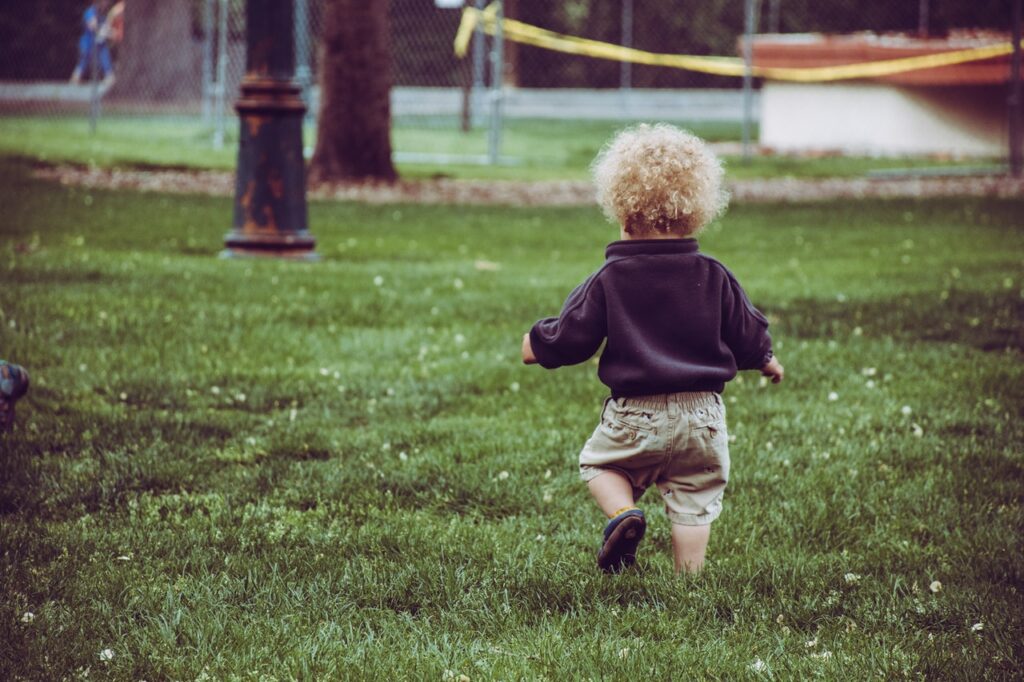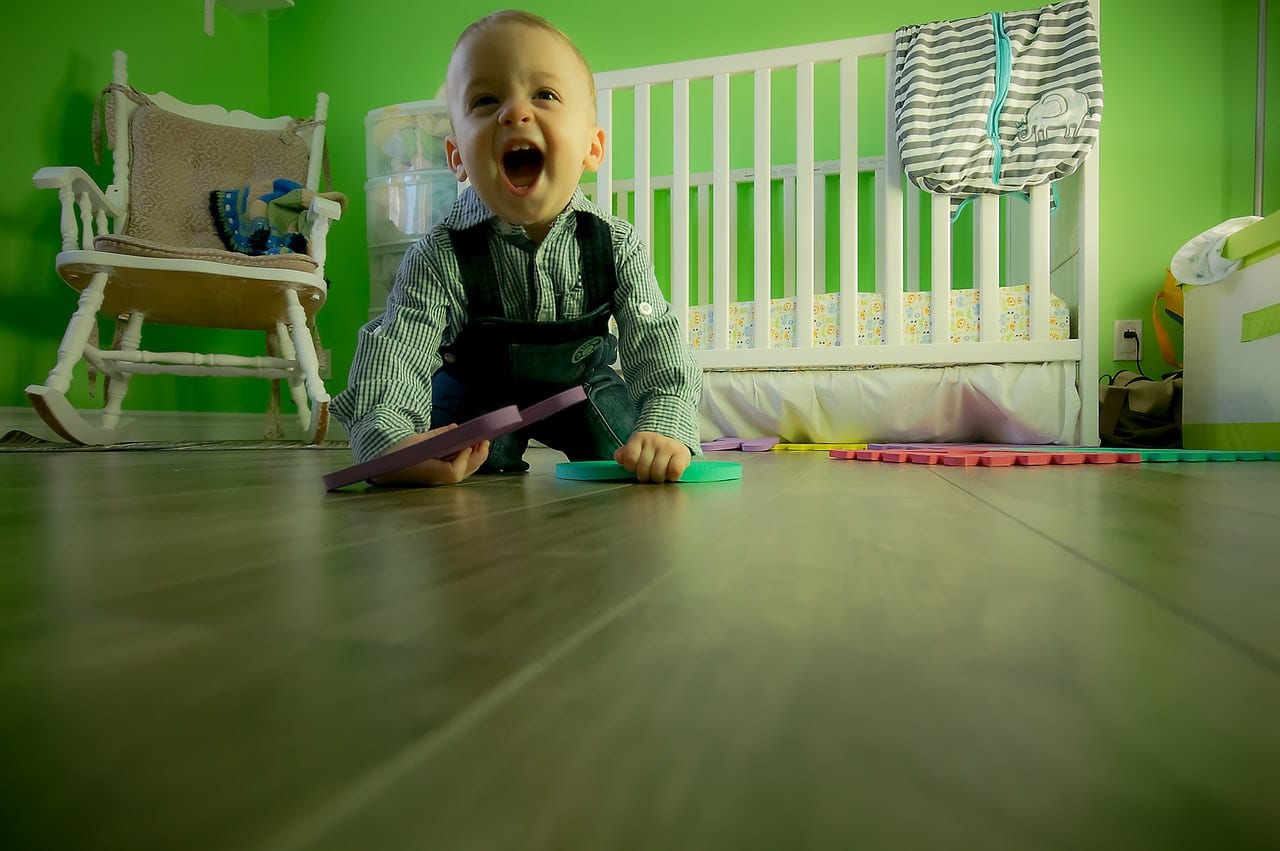All babies are special and unique, but at some point, most little ones will outgrow their swings. There is no simple answer to this question as each child develops at a different rate. Swings offer a great way for babies to soothe themselves and can provide some relief from Colic symptoms. Babies outgrow swings when they can sit upright on their own, without support.
Most babies outgrow swings around the age of 9-12 months, but it can vary based on their weight and size. Once your baby has outgrown the swing, you may want to consider investing in a baby jumper. They help promote bouncing and jumping, which is great for development. As always, consult with your pediatrician before making any decisions about your baby’s development. In this article, we’ll discuss how or when do babies outgrow swings?
In This Article
When can a baby outgrow swings?
However, baby outgrows swings when they can sit up unsupported. Once your baby can hold its head up and sit without support, it’s time to move on to something else. A baby’s neck muscles are not strong enough to support their head until they are around 9 months old. An infant swing typically includes a support harness to provide head and neck support for young babies. Therefore, once your baby can hold its head up, the harness is no longer needed and poses a strangulation hazard if it becomes wrapped around your child’s neck.
Even though there are adjustable reclining positions in most infant swings. It’s still recommended that you keep your infant in an upright position. Proceed with caution, if your baby falls asleep in the swing. An inclined infant seat may increase the risk of the flat head syndrome, positional plagiocephaly. Baby swings are not meant to be used as a full-time mode of sleep for your baby. They are loaded with features that keep your infant stimulated and entertained. So, make sure to limit the amount of time your child spends in the swing and watch them carefully while they are using it.
Most babies outgrow swings when they can sit up unsupported, typically around 7-8 months old. And it’s important to keep an eye on your baby and make sure they’re not spending too much time in the swing. According to the pediatrician, children should not be spending more than 30 minutes in a baby swing daily. Also, if your child does fall asleep in their infant swing it’s best to move them to their crib as soon as possible. A good way of making sure your child is safe while sleeping in the swing is to put them in a sleeper or clothes with feet attached.

How to use a baby swing?
A baby swing can be very useful when you need to do something else while your baby is still awake. There are several models of baby swings available on the market with different features and functionalities. So it’s important to know how to use them properly. If not used properly, any type of baby swing can become dangerous for your child.
The first step in using a baby swing is to find the perfect spot where you want it placed. Although it’s quite common to see swings near the doorway, you should place the swing near a window because your baby will enjoy watching all the people going by. The next step is to find the perfect spot for your child’s swing. You should try to find a flat and clear surface without any obstacles such as curtains, toys, or other objects that can be removed from their places. Make sure that there are no tables or sharp edges nearby.
Also, keep in mind that the swing should never be placed near sockets because it can become dangerous for your child if their hands get too close to them. So make sure the power cord is properly wrapped and you may want to use a small piece of tape to secure it to the wall. You should do this especially if your child can stand.
Now that you have found the perfect spot, it’s time to set up the swing. Most swings need to be assembled first and they usually come with a manual. Once the swing is assembled, it’s time to find the perfect height. To do this, you need to measure your child’s height while they’re sitting on their bottoms. A good position is when they’re at eye level with the arc of the swing. Now, it’s time to secure them safely using the harness provided with the baby swing.
What’s the age or weight limit of baby swings?
Baby swings are generally manufactured with an age limit of 6 months and above. The reason for these age limits is to prevent the possible risk of injury. As children can sometimes be over excited and accidentally hit themselves on the head as they swing back and forth against the safety restraint. While it may not happen all the time, there’ve been reports of children getting injured.
Baby swings are made of plastic, like the popular fisher price bouncers which can easily crack or break when fallen on by an over-excited child. Also, 6 months is around the time where babies start trying to get up and walk. This age limit enables them to move about safely without you having to worry they’ll topple the swing.
However, some baby swings come with an adjustable height. The height of the swing can be adjusted when your child grows older and they no longer need to sit in a swing. As well as there are also some other factors behind the baby swings that their swings age weight limits or size as well. This all depends on the manufacturer though, so make sure you read up on it. And the weight limits are usually set so that the baby swing can accommodate more than one child.
When should baby stop using a swing?
This varies from one baby to another, depending on the weight of the child, his/her mobility, or the ability for independent exploration of the environment. The length of time will also depend on his/her age. It is important to respect these differences by observing your baby with attention and not leaving him/her unattended in a swing too long. It is not advisable to spend more than 1/2 hour each day in a swing.
Most pediatricians agree that babies can use swings until they are about 9 months old. After that, babies may start to become restless in the swing and may not be getting the full range of motion they need. It is also important to note that babies should never sleep in a swing. Swings are meant for fun and stimulation, not for sleep.
It is also important to take into account the baby’s health. If he/she suffers from reflux, it is better not to use a swing. The same is true for children who suffer from gastroesophageal reflux disease (GERD). In these cases, the doctor may recommend other therapies that do not include using a swing. For a baby soft and safe swing a parents should aware about their health.
Baby Swing Safety Tips for parents:
Here are some guidelines for parents to follow to ensure the safety of their child when using a baby swing.
- Avoid overhead installations or high mounting heights, as swings can easily be dislodged from these positions.
- Pay attention to your child’s weight capacity and never exceed it.
- The seat of the swing should be able to move freely in an up and down motion.
- Check for any worn or frayed ropes or chains before each use.
- Make sure the swing is placed on a flat, level surface.
- Keep all sharp objects and other potential hazards out of reach of the child.
- Be aware of how your child is using the swing and stop using it if he or she appears to be in danger.
- Always adult-supervised children when they are using a baby swing.
- Follow all manufacturer safety instructions.
- Remember that baby swings are not toys – they should only be used when an adult is present and watching the child.
- Never allow more than one child to use a swing at any single time.
- Always secure your baby in the swing according to the manufacturer’s instructions (i.e., use harnesses, etc).
- The general rule of thumb is that children under 1 year old should never be left unattended in a swing.
As with any piece of baby equipment, it is important to follow the safety guidelines for using a baby swing. By taking these precautions, you can help ensure your child’s safety while he or she enjoys this fun activity.
The Conclusion
It is important to know when a baby has outgrown his or her swing. You want to make sure that your child does not get too big for the seat and then start using unsafe methods of getting in and out of it, such as pulling himself up on the sidebar. However, this can be difficult because swings are often made with soft padding so they will grow with your baby. One way around this problem is to use a safety belt system that attaches from underneath the seat onto one strap near each armrest.
Therefore, the best age for babies to use a swing is around 9-12 months. This is when they are sitting up, so the baby can be in the swing without being propped or strapped into it. Once they outgrow swings at this point, they will need their own space and won’t want to stay in one place too long. If you have any queries regarding this context please share with us through a comment section below.










![Home Renovation Guide [2025]](/app/uploads/2021/04/design-hacks-1-378x300.jpg)
